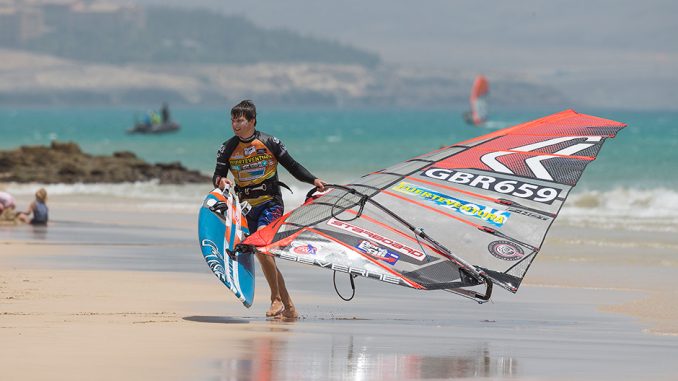
Words: James Dinsmore
Pics: PWA/Dave White/Bartosz Wozniiak
James Dinsmore is quite an interesting character, when you consider his status as BSA UK Slalom Champ, pro sailor – but having a hectic day job and being a committed father and husband. As much as he competes across most events in the UK, and some overseas, James is in the same boat (or should that be on the same board?) as the rest of us. Chasing forecasts, nabbing short stints for training and balancing all of life’s scenarios. So more real world windsurfer than anything else – although you can’t argue with Mr D’s on water performance! Check out the following to get an insight into how he juggles all those balls…
My father started windsurfing in the 1980s and it was his enthusiasm and encouragement that led to me giving it a go. I have distant memories of learning to uphaul his F2 Lightning on a small gravel pit and sometime later getting rinsed trying to beach start at the coast.
My father kindly gave me my first short board, a BIC AstroRock, in 1994. From the outset I think that I loved the sensation of gliding across the water at speed. As a student I helped run the windsurfing club at my medical school in London but, by nature of living in the city, we didn’t get on the water at all often. I didn’t get to sail regularly until I moved to Australia in my mid-twenties and then had the money to buy some equipment and access the ocean. Ever since then it has been my sporting passion.
I love all aspects of windsurfing. When I lived in Western Australia I only owned wave and freestyle-wave equipment and all that I thought about was learning how to spock, loop and riding waves. One of my first competition experiences was the Margaret River Wave Classic.
Since settling on the south coast of England I have ended up focusing on slalom because it plays to my strengths. I have also had various injuries over the years, which don’t limit my slalom but are aggravated by some wave and freestyle manoeuvres. I still love wave sailing and even now am looking forward to the slalom ‘off-season’ when I can get out my wave board.
I think I am naturally a competitive person and like to push myself in whatever sports I do. Slalom racing encourages me to make the most of every session on the water – including the average ones. Living on the south coast, we have many days when the wind is force 4 and chugging back and forth without a goal could get boring. However, with future races in mind, I go out on my slalom gear and work on improving my gybes and the way my gear is set-up. Competition is one of the best ways of improving your sailing.
Windsurfing has been very good to me. I have been privileged to have sailed at some stunning locations worldwide, to have made great friends, to have had modest national competition success and to have participated in top-level international competition. Competition is hard on the emotions and you have to be prepared for disappointment. I had a particularly disastrous slalom event in Weymouth about six years ago when I fell or broke something in all of the races and I was thoroughly dejected afterwards. A couple of years, later Lady Luck was on my side when I almost unbelievably came from behind to win my first British Championships ahead of Simon Cofield. It was almost unbelievable because to do so I had to beat Ross Williams in the one final we completed. And, as many will know, Ross is no slouch!
Getting time on the water is a struggle with work. I also want to be a good father. Racing to a decent standard does require commitment though. One of the biggest problems with windsurfing is the chunk of time it takes either side of a sailing session to get to and from the beach and to rig and derig the equipment. I am lucky that I live close to the beach so I can be out and back within an hour if pushed. My wife knows that if I can get out on the water regularly then I am a much more patient and positive person the rest of the time, so she encourages me to get out there. A beachfront house with gear rigged in a garden hangar would be helpful!
A routine is something I don’t really have anymore. These days my training and time on the water is sporadic, depending on everything else going on in life. One very important part of slalom sailing is that physical conditioning is far from everything. Accumulated experience and race craft skills go a very long way. If you can set your gear up right and make good decisions during a competition then you may be able to be competitive even if you haven’t spent as much time training.
Against the full time professionals, my back is very much against the wall. They are fitter and are far more prepared kit-wise than me. To be competitive in slalom you need to have tuned up your equipment well before the competition season starts, so that you can almost forget about it when racing. The tuning process requires many hours sailing in a wide range of conditions while being pushed by expert tuning partners. I am unable to manage this as an amateur with a ‘normal’ life.
Over the last five years I have used regular high intensity weight training with low weights as a way of keeping generally strong. I am sure that making stretching a part of my daily or at least weekly routine would be a good thing – but constraints make it difficult at present.
If you want to prepare for competitive slalom then you need the right conditions and the right training partners. If you want to take on top international competition then you need to train with guys who are already successful on that stage. In the UK the only person who fits that bill is Ross Williams and he is rarely around. For the last three years I have spent 10 days in Tenerife before the season starts and that has always been invaluable.
It is a privilege to take part in international competition, especially the World Tour, and I went to Fuerteventura to enjoy myself this year. Fuerte is a very tough event. The competition is five days long and it was windy every day. It is hot (especially in the rigging tent) and sandy, and every morning you have to head down first thing after breakfast to get your sails and boards ready. It is a test of mental and physical endurance.
Looking back at the PWA live stream it looked quite idyllic conditions, with sailors on small kit and the azure water seemingly pretty flat. It is an illusion; in reality the conditions are extremely difficult on the race course. It is often hugely windy, with gusts well over forty knots, making it difficult to sail in a straight line at times. On the reaches heading out, the waves and chop mix to create a nightmarish surface that mean even the best guys are dropping gybes at times. I was happy to make it round the course dry, which is something I usually don’t really think about.
For me a big problem about the comparatively extreme conditions was that I didn’t have the opportunity to train and prepare for them. During the course of the competition I made huge strides with the way I set my equipment up but by the time I started to feel comfortable, it was a bit late. As an example, I had started off with nowhere near enough downhaul on my small sails so when the big gusts hit I was being lifted uncontrollably. In the races when the wind was relatively light (e.g. 7m sail weather) I was more competitive.
I do agree that slalom is comparatively expensive and perhaps more kit critical in comparison to wave or freestyle. However, I started slalom in about 2005 with a third hand board and two old sails and was able to start to get to grips with the sport without being limited by my kit. Any slalom kit that has been produced in the last five years can be very competitive during national level races in the right hands and can be used to beat guys on new but poorly tuned kit. At the highest level it can become very expensive if you buy a ‘latest/greatest’ fin.
I am very fortunate to have been supported by Severne and Starboard for the last four seasons. They have given me plenty of help, which has increased as I have managed to deliver three successive British Championships for them. They are able to provide equipment and make swapping boards and sails each season manageable. Quite clearly the deal I have got has improved over the years as my profile has improved within the sport. Aside from boards and sails I am grateful to F-Hot for helping me in a similar way with fins this year and to my other sponsor, the National Watersports Festival.
At the start of each season I submit my plan and my sponsors have a look and see if it seems reasonable. As well as taking part in national and international events, it is important that I am an ambassador in other ways. I help out with grass roots racing by running a local slalom group. They also know that I don’t just turn up at events to win but also take time to support the other team riders. In addition I get involved in writing articles, doing interviews and support the brands through social media.
I would advise anyone looking for support that sponsors need not only sailors who will get results but also sailors who will be an ambassador for their brand. They should think of all the ways they might offer value for money for their sponsor.
It is often difficult to know which sponsors might be suitable for you. It maybe that a brand can offer very good value equipment but, if there is no one else you know using it and no obvious technical support available, then there is a risk that you will struggle to discover how best to rig the sails and your results will be disappointing on the race course. Technical support is very important when it comes to making the most from your slalom kit.
The UK slalom scene is really a bunch of pretty normal people who go racing for fun at the weekends. Newcomers are always welcomed and do not need to feel daunted. Remember that everyone was a newcomer once. If you are interested in competing, then the UKWA website is the place to go for information. If you want to try racing then events like the National Watersports Festival are ideal, inclusive and a great place to start.
I think it is fair to say that windsurfing is a comparably inaccessible sport for many people. The equipment is not inexpensive and is bulky – so you need a vehicle. Personally, I was not able to really do much sailing until I had a job and a car. My fellow windsurfers come from all walks of life; I think of it as a niche sport as opposed to an elitist sport.
For the last six or seven years I have been involved in running local slalom clubs. It started when I lived in Poole and I ran the Poole Slalom club with a dynamic group, including Guy Cribb. If the forecast suits on a Wednesday evening in summer then we gather on the beach.
I think if windsurfing is to rise in popularity it will be on the back of advances in inflatable technology that will allow the boards to become more portable. There are some interesting ones coming to market as we speak.
For my day job I am a hospital doctor specialising in anaesthetics and so I spend most of my days in an operating theatre. Working full time means that windsurfing is definitely a hobby as opposed to anything more. Sadly I got into windsurfing and racing far too late in life to ever be able to try out being a full time pro. It is very difficult making a living from competitive windsurfing and I now have far too many home and work commitments to make it a realistic possibility.
My wife Aneeta is a fair weather windsurfer, needing tropical air and water temperatures before she gets aboard. She has not sailed since we went to Boracay in the Philippines several years ago. We had great fun on a tandem then and it would be great to repeat that experience one day.
I am quite excited about foiling, as it is a very different experience and a new challenge. It will allow me to get out in very light winds and the impressive ability to head up and downwind means that you can actually go places rather than just going back and forth. I was hoping to get plenty of time on my foil in the August break mid-slalom season, but I have been kept off the water because of wounds that I sustained in Fuerteventura.
I think that it is healthy to embrace technology and be open-minded. In windsurfing and SUP I suspect the foiling element will be taken up by a minority only.
The problem with slalom racing is that you need a decent amount of wind and there is no guarantee of that at events. Foiling gives the possibility to use a slalom board and sail in very light winds, so you can actually compete. The French run a foiling class at slalom events if the wind is very light and I understand that IFCA may run a World Championship next year. I do think the Neil Pryde Olympic proposal to use foils in light winds and then race slalom on the same boards with a normal fin in higher winds could be fantastic.
My wife and daughter often come to support me and spur me on. I am grateful to Aneeta for her enduring support, to my father for introducing me to windsurfing, to Allan Cross as a friend and team manager and to my main sponsors Starboard and Severne.

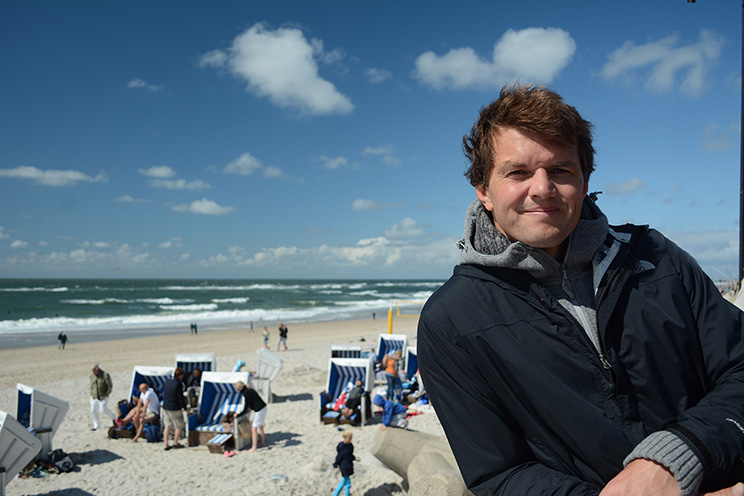
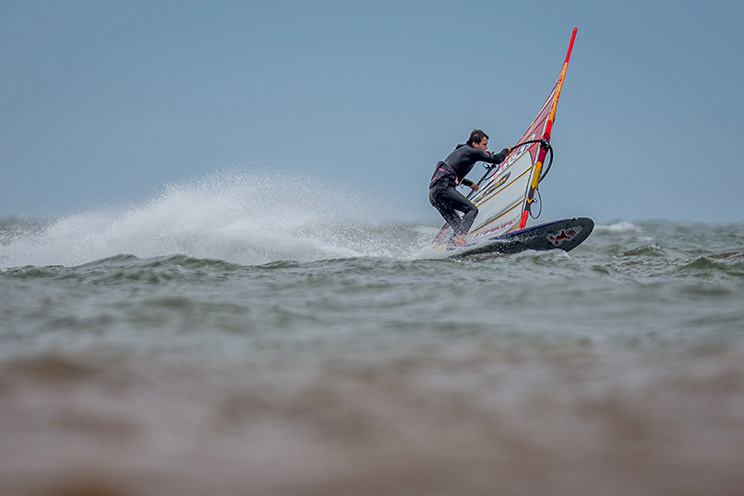
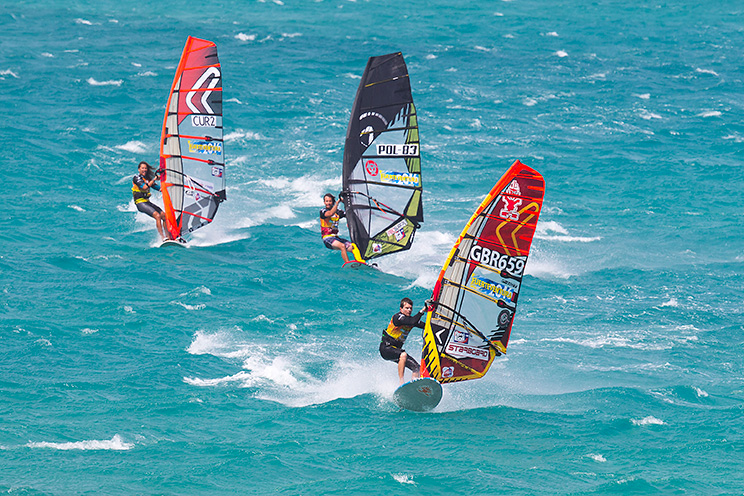
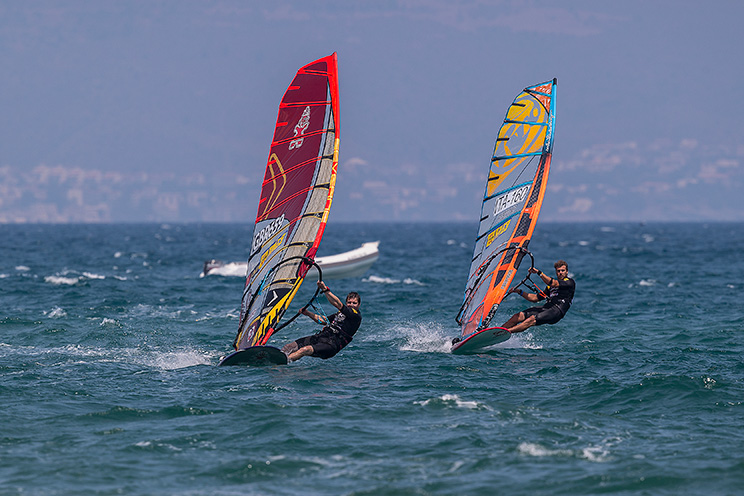
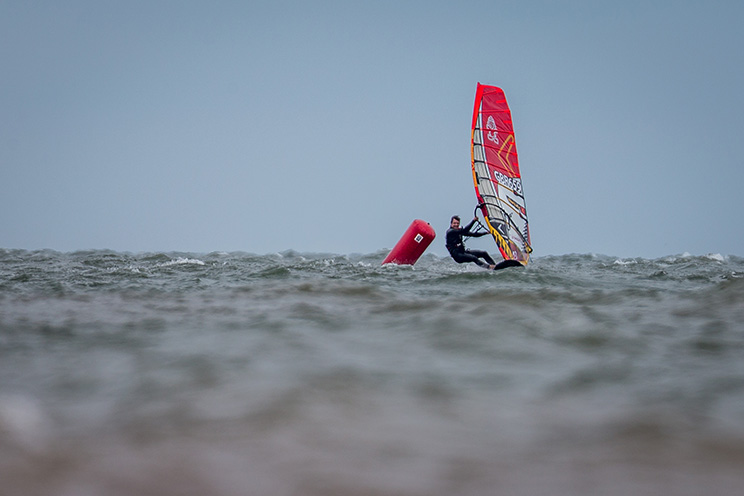
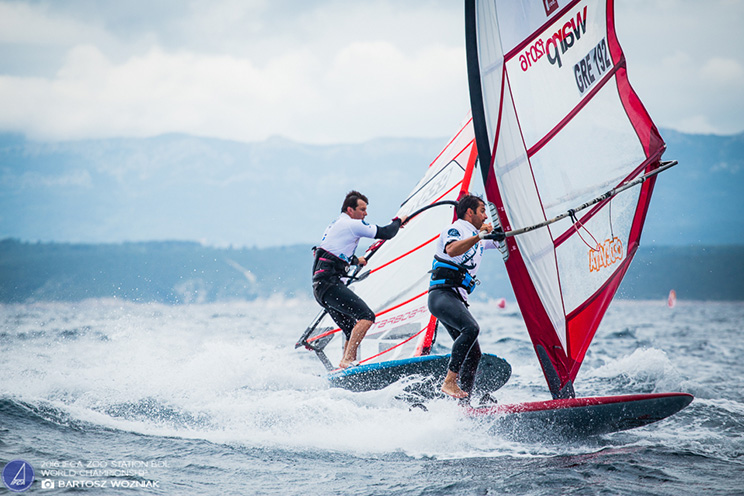
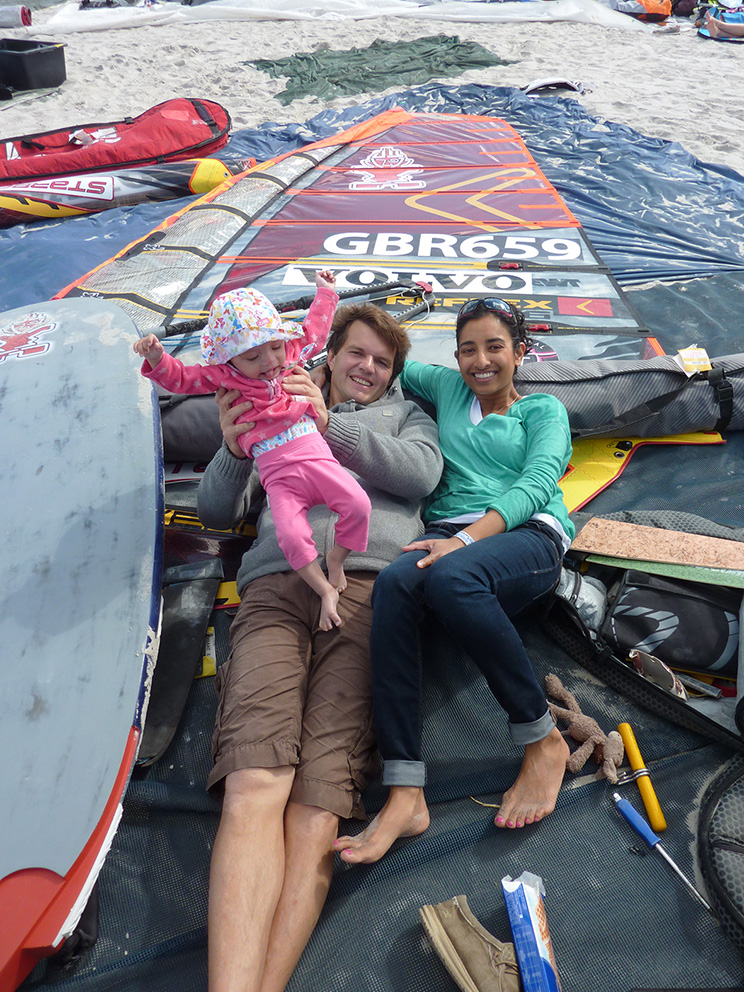
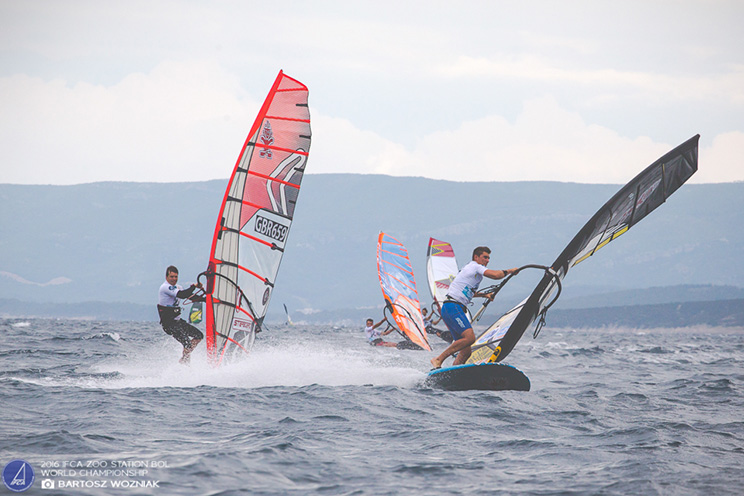
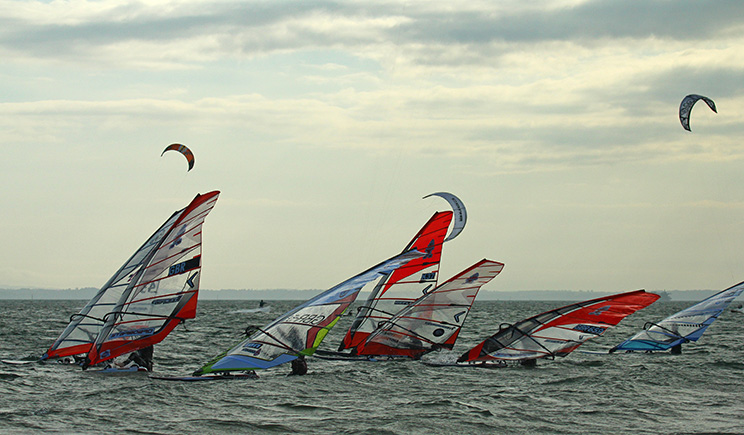
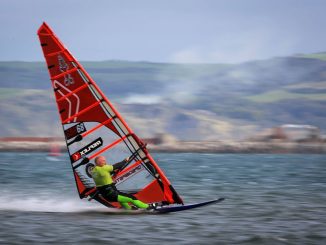

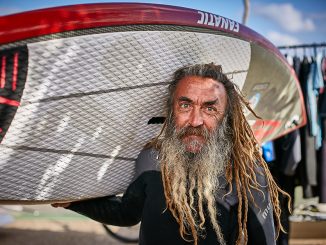
Leave a Reply